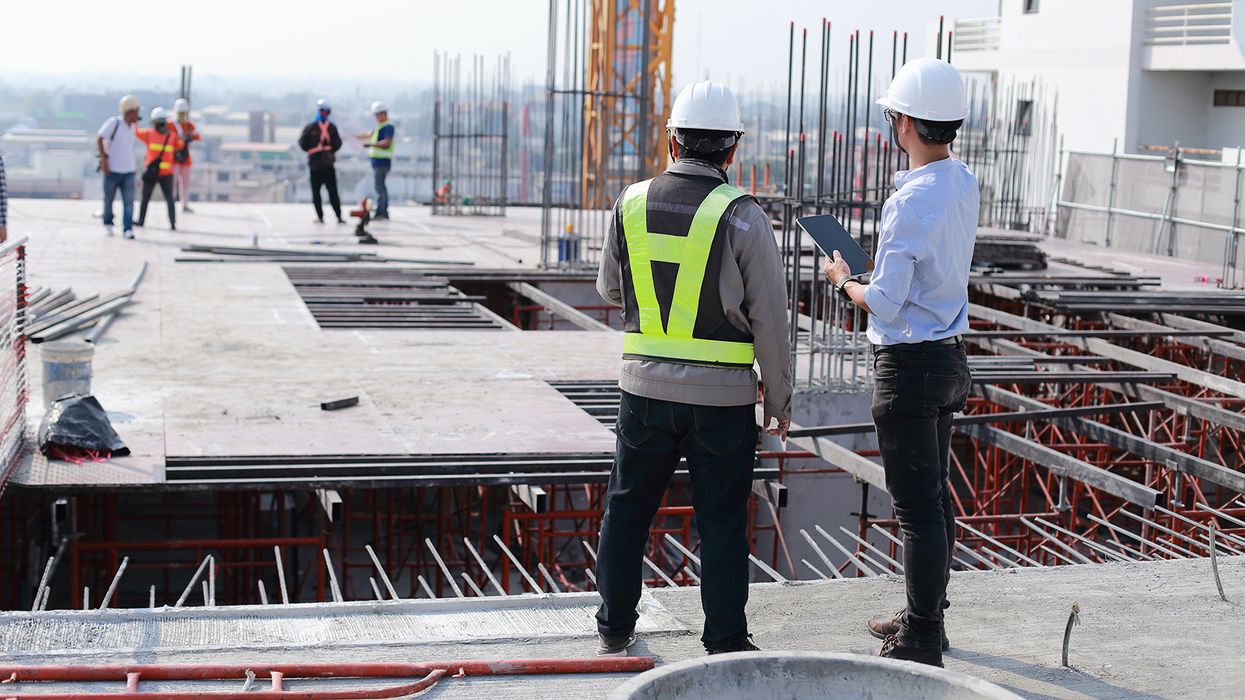Using ergonomic assessments in a whole new way: preventing OSHA’s Top 10
You won’t see ergonomics on OSHA’s Top 10 list of most frequently cited standards but focusing on ergonomics can certainly lead you to hazards associated with the Agency’s Top 10. This may seem far-fetched but let’s take a look at how observing employee body mechanics while using ladders, scaffolding, powered industrial trucks, and machines can help identify issues that could lead to employee injuries and potential citations.
OSHA’s Top 10: FY 2022
1. Fall Protection – General Requirements
2. Hazard Communication
3. Respiratory Protection
4. Ladders
5. Scaffolding
6. Lockout/Tagout
7. Powered Industrial Trucks
8. Fall Protection – Training
9. PPE – Eye and Face Protection
10. Machine Guarding
Reviewing ergonomics with the Top 10 in mind
Employees met with workplace challenges are going to instinctively opt for a path of least resistance. It’s our nature as human beings. Ergonomic challenges such as reaching, bending, listing, or twisting often lead to employee behavior that can be less safe or non-compliant with company or OSHA regulations.
Fall protection always makes the list and is often the top contender, so let’s begin there. Unprotected or leading edges are extremely hazardous work areas. Workers may try to lean over or stretch to perform a task because they don’t have the correct equipment or tools to perform the task in a more neutral position, or they may walk too close to an edge and catch themselves at an awkward angle.
Slips, trips, and falls can occur when workers try to balance on make-shift steps, hop on and off equipment, or maneuver awkwardly across uneven surfaces, icy walkways, or mud puddles. By reviewing worker ergonomics, it’s easy to see the leaning, stretching, tiptoeing, and back bending that often leads to OSHA’s number 1 violation – falls. Providing proper fall protection, guardrails, equipment, and training can prevent injuries and violations.
Observing worker ergonomics during ladder use is also very telling. If workers are overreaching, there may be a need for a different type of work surface, such as scaffolding, or additional training on proper ladder use. Workers also may attempt to carry heavy or awkward loads up ladders if they feel rushed to complete a task or don’t have the correct hoisting equipment. Observing worker posture and body mechanics will lead to identifying what equipment or training will improve worker safety and ensure compliance.
Scaffold use is another prime opportunity to let ergonomics be your guide in risk reduction. Workers may decide to work on unstable scaffolding when accessing an area where an aerial lift is more suitable. Stacking equipment or carrying and storing heavy loads on scaffolding is often a worker’s attempt at reducing the number of treks up and down the scaffold ladder. Providing the proper hoisting equipment can reduce repetition for workers and encourage safer behavior.
Forklifts, or powered industrial trucks (PITs), pose ergonomic challenges such as the repetition of getting on and off the forklift, lifting or stacking loads, and repositioning loads. These can lead workers to devise their own efficient way of getting the job done. As a result, they may reach or lean out of the forklift cab, lift and stack loads that are too heavy or tall, or use the forks improperly.
Ergonomic concerns are most obvious when workers interact with machines. They may use excessive force to perform tasks, work in awkward postures, or be required to use repetitive motions. Employers should identify and acknowledge “creative inventions” or shortcuts that workers have devised to simplify their work. By communicating with workers, employers can determine safer means of accomplishing the same goals, such as the use of guards, push sticks, ergonomically friendly tools, vibration-reducing personal protective equipment (PPE) and lifting devices.
What are some ergonomic indicators to watch for?
Watch for these ergonomic clues and remediate as soon as possible:
- Performing repetitive or prolonged tasks;
- Using excessive force to accomplish a task;
- Placing localized pressure on body parts while performing work (i.e., resting arms on the side of a workstation);
- Working at too rapid of a pace;
- Working while kneeling, squatting, bending, or twisting;
- Performing work with heavy impact or continual vibration;
- Working in temperature extremes;
- Modifying equipment or tools to make work “easier”;
- Moving the body in ways that indicate fatigue or soreness (i.e., rolling shoulders often or shaking arms and hands); and
- Using assistance devices such as back belts or wrist braces while working.
Monopolizing on ergonomic assessments to identify other hazards is a proactive approach to protecting workers while preventing OSHA citations.
Key to remember
Observing employee body posture and physical dynamics in a variety of tasks can lead to ergonomic solutions that prevent injuries and potential citations.




















































